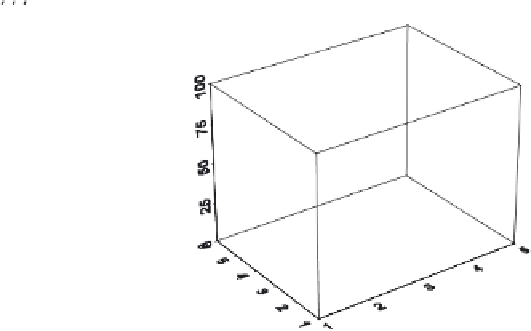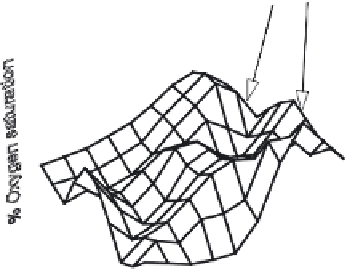Environmental Engineering Reference
In-Depth Information
O
2
% saturation
60
70
80
90
100
110
0
prairie
cropland
1
Leaf rib
2
3
4
5
6
7
B
A
8
FIGURE 11.15
O
2
profiles in unconsolidated sediments and groundwater below cropland
and prairie (A) and an O
2
concentration map at the surface of a leaf particle from ground-
water (B). Statistical analysis showed that the O
2
concentration was significantly lower for
prairie in A than under cropland. The groundwater was at 4.2 m in the prairie profile and
5.3 m in the cropland profile (A, reprinted from Dodds
et al.,
1996a, with permission from
Elsevier Science © 1996; B, reproduced with permission from Eichem
et al.,
1993).
QUESTIONS FOR THOUGHT
1. Why are nutrients that are taken up by cells often preferred when in a
reduced form, even when organisms inhabit oxidized environments?
(Hint: Think of the conditions under which life evolved.)
2. Why do midge larvae that live in the profundal benthos of lakes often
turn bright red when brought to the surface?
3. Why are aquifers in karst regions often oxic?
4. Why is oxidation of organic carbon by O
2
more efficient than
anaerobic respiration?
5. Dense periphyton mats can float off of the bottom of a lake during
the day, float to the surface, and then sink again at night. Why might
this happen?
6. Winter fish kills from anoxia can occur in Arctic lakes that are not
very productive and do not freeze to the bottom. Why?































































































































Search WWH ::

Custom Search